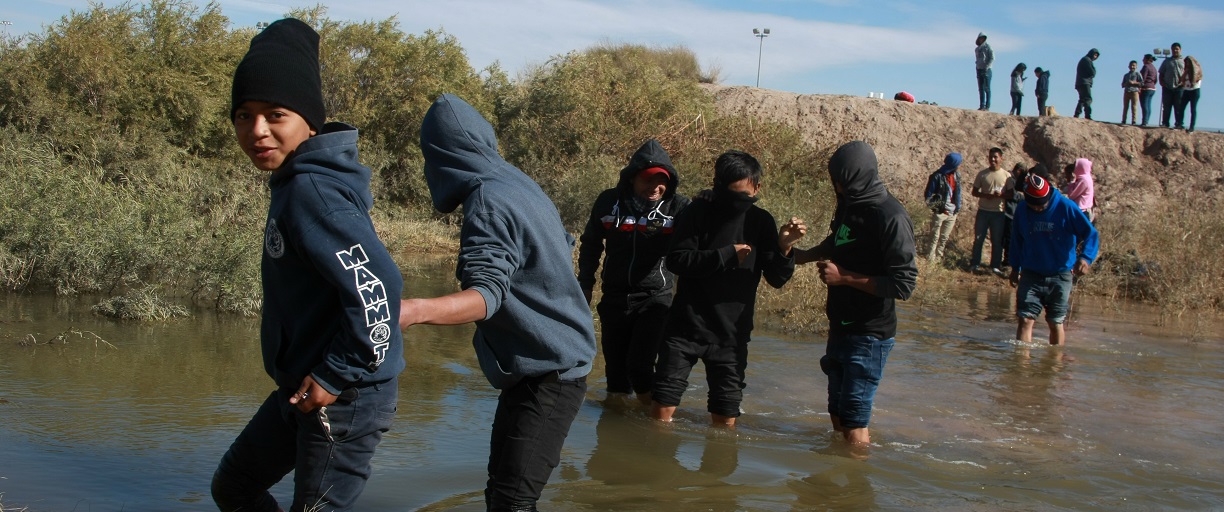The Department of Homeland Security (DHS) published new data last week showing that over the past 12 months, the Border Patrol has carried out nearly 1.7 million apprehensions at the southern border—a record.
Opponents of President Biden quickly jumped on the news to renew claims that the border is somehow open. But focusing only on that one number masks a fundamental truth: border security is tighter today than it was just two years ago under President Trump. The Biden administration has carried out nearly 800,000 expulsions under Title 42 in the last nine months. And 1.7 million apprehensions does not mean that 1.7 million individual people have been detained while trying to enter the U.S.
Those claiming the borders are open often ignore what happens after an arrest at the border. Over 1,000,000 of those arrests led to an immediate expulsion under “Title 42,” the pandemic expulsion policy the Biden administration has continued to rapidly expel the majority of people crossing the border back to Mexico or their home country without a deportation order.
Out of the 1.7 million apprehensions, roughly 1 in 3 led to a person being permitted to access the asylum process. In the other 2 out of 3 times, a border arrest led to an expulsion or a deportation.
Just under 250,000 people, mostly families, have been directly released at the border with a notice to appear in immigration court or to report to an ICE office to begin the court process. That is fewer than the number of families allowed into the United States to seek asylum during 2019 under Trump.
Officials sent an additional estimated 160,000-180,000 people to ICE detention centers. Once in ICE detention, they were either deported, released on bond, or processed through the normal pre-pandemic asylum system.
An additional 121,000 non-Mexican unaccompanied children have been sent to federal shelters run by the Office of Refugee Resettlement. Children taken there are held for weeks or months while the agency tries to find a sponsor that will take a child during the asylum process.
In total, the U.S. Customs and Border Protection data shows that roughly 1.1 million individual people were encountered at the border. That means that nearly 600,000 arrests were of a person on their second, third, or higher failed attempt to enter the United States. In total, over 300,000 people crossed the border more than once and were arrested each time. Thanks to Title 42, the rate at which people crossed the border more than once rose from 7% in 2019 to 27% in 2021, the highest in decades.
Why are so many people repeatedly crossing the border unsuccessfully? The answer lies in Title 42. After being summarily returned to Mexico within hours of a failed attempt to enter the U.S., desperate people can quickly try again, thanks to smugglers who rapidly adapted to Title 42 in 2020 and began offering discounts to people on their second or third tries.
Title 42 also stranded tens of thousands of asylum seekers in Northern Mexico, where they have often fallen victim to cartel violence. Human rights advocates have documented over 7,600 kidnappings and other attacks against people sent back to Mexico under Title 42. Many desperate families have even self-separated, with parents sending their children across the border alone.
Finally, even though Border Patrol documented a record number of apprehensions over the last 12 months, that doesn’t mean that there was anywhere close to a record number of border crossings. During a nearly 25-year period from the 1980s through the early 2000s, there were around 3 to 4 million border crossings each year.
However, because the Border Patrol was much smaller in those days, DHS estimates indicate that most people made it through without being apprehended. That is no longer the case today. In 2006, for every 3 people apprehended at the border, an additional 5 made a successful unlawful entry. Today, it’s just 1.
The harsh reality of the border right now is that who gets admitted and who gets expelled is largely down to chance, as well as a person’s nationality and whether or not Mexico will allow the U.S. government to expel that person back to Mexico.
Those from Mexico, the Northern Triangle, and Ecuador are more likely than not to be expelled. Those from countries where an expulsion would require ICE to put them on a plane are more likely be admitted.
Confusion around who is still being allowed in will persist given the government’s mixed messaging and reliance on Title 42 and other deterrence-based policies. And without any progress toward building a humanitarian protection system at the border that is safe, humane, and orderly, many people will continue to falsely believe that the borders are somehow open.
Decades of deterrence-based policies have shown that they don’t work in the long-term. They can generate a self-reinforcing cycle of “border crisis” narratives that makes presidential administrations wary of any real reforms. But fixing the border shouldn’t be a Catch-22.
Rather than using resources to do things like expel thousands of Haitians to send a message to others who aren’t even at the border yet, the Biden administration could instead surge resources to ports of entry to process asylum seekers in safety. The threat of further backlash for doing so is low when millions of Americans falsely believe the borders are already open.
FILED UNDER: Biden Administration, Customs and Border Protection, Department of Homeland Security


